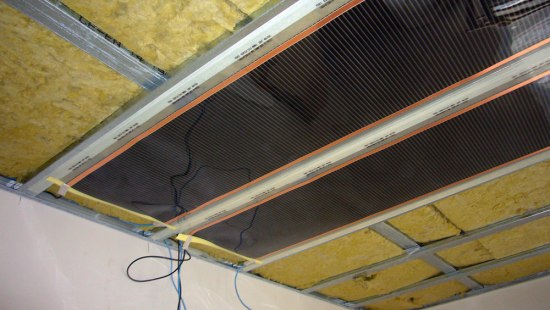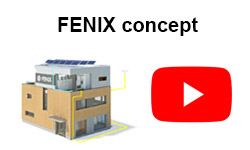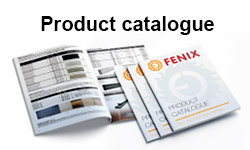Why ECOFILM heating foils?

We first warned customers against unbranded heating foils made in Korea in April 2012. These foils are delivered to users with absolutely unsuitable wattages, posing the real risk that individual structural elements of buildings in which they are fitted will suffer degradation – see warning here. We would, however, like to draw your attention to this danger once again, and this time in connection with the incorrect installation of heating systems by the sellers of these products, sometimes to the extent that the systems fail to meet the minimum requirements of the relevant standards.
Ceiling heating
The picture No. 1 shows ECOFILM heating foils which have been correctly fitted in parallel with the metal beams to which they are attached by their non-heating part. After covering, the foils will be in direct contact with the plasterboard suspended ceiling, which ensures the highest heat transfer efficiency.
The picture No. 2 shows another application, this time using a Korean heating foil. Here, the foils are wrongly placed above the metal beams of the plasterboard structure. This placement doesn't enable the necessary contact between the heating foil and the plasterboard; not only does this significantly reduce the efficiency of the heating system, it also raises the danger that the foil will overheat due to inferior heat conduction, thus significantly reducing its lifespan.
It is important to realize that ceiling heating utilizes infrared radiation for the transfer of heat; it propagates through the air and warms only the solid objects which it reaches. In an ideal situation, the foil should be in close contact with the plasterboard, warming it directly: the infrared radiation from the foil is then created on the surface of the plasterboard, which then radiates that heat into the heated area. If there is an air gap between the heating foil and the plasterboard, the foil must heat the plasterboard with infrared radiation first, and to such a temperature that radiation occurs from the plasterboard into the room – the plasterboard is a solid obstacle which the infrared radiation from the foil will not pass through.
There is also another aspect to consider – the air in the gap between the foil and the plasterboard will warm up from the plasterboard, and if this space isn't hermetically sealed, a convection current will be created that will take the heat away into the under-roof area (particularly later when the thermal insulation shrinks). The system is not only inefficient but may even become non-functional over time, i.e. it will not be able to heat the room due to the undesired heat loss.
What is also worth considering is the reliability and safety of a heating system installed in such a way. The heating parts of the foil – i.e. the elements, which are have an electrical current of 230 V passing through them – are in direct contact with the load-bearing elements of the metal structure. There is a real danger that so-called leakage currents may occur – these can trip the residual current device (installation of a residual current device with a tripping value of ≥ 30mA is required by the relevant standard), or if the foil is damaged by the metal elements, electric voltage can be transferred directly to the metal part of the load-bearing structure – a life-threatening issue.
Wall heating
One of the installation types recommended by the sellers of Korean heating foils is wall heating. This solution can seem attractive from the user's perspective – however, it is in direct contradiction to the EN 60 335-2-96 Standard. Even though such an application would be completely functional with regards to the requirements for the heating of rooms, and the firm supplying the system would even “provide” an audit report, this type of installation doesn't conform to valid legislation and is prohibited by the relevant standard. Customers with such a system are placing themselves in danger of having their claim for indemnity refused should an event occur against which they are insured.
Structure of heating foils
Whole-surface heating foils, which sellers of Korean foils market as their “unique, revolutionary and patented technology”, have been produced at the FENIX production plant for more than 30 years. They were used abroad until 1985, when they were replaced by a more modern screen printing method involving the deposition of a very thin graphite emulsion on polyester foil. Despite this, whole-surface heating foils are still used by FENIX for certain special applications – e.g. in ECOSUN radiant heating panels. Instead of the obsolete cellulose cord (see the structural differences below), glass fibre fabric is used. It is inert to moisture and non-flammable, it has high temperature resistance, and it can be loaded with a wattage of up to 900 W/m².
HEATING FOILS OFFERED BY COMPETITORS – picture No. 5
- obsolete technique involving dipping the cellulose fibre matrix into graphite emulsion, the cellulose (paper) layer is prone to moisture absorption and has lower strength (the layers of the foil can be torn off by hand)
- "gluing" of the copper and silver strips via a polymer – even if polymers of very high quality are used (so-called doped polymers), a level of conductivity comparable with galvanic silver plating (the technique used for ECOFILM foils) isn't achieved
- whole-surface foils do not have cuttable edges – after cutting the foil, the heating element is open along its whole width, which increases the risk of possible faults or injury (operating voltage 230 V)
- if heat transfer is blocked (an emergency situation), an undesirable increase in output will be caused, resulting in temperatures of > 100 °C, the destruction of the heating foil and damage to the floor
ECOFILM® HEATING FOILS – picture No. 6
- modern screen printing technique involving the application of graphite emulsion on polyester foil, significantly firmer connection of layers compared with cellulose matrix, fully homogenous graphite emulsion (no cellulose fibres)
- cuttable edges between the heating strips enable the safe division of the foil – the heating element is always protected by a non-heating edge
- when heat transfer is blocked (an emergency situation), the graphite emulsion is diluted with polyester and the output is decreased – the floor is protected against the undesirable effects of high temperatures
- the copper bus has galvanic silver plating – this is a vastly superior joining method compared to gluing the silver and copper strips with a polymer
- lamination takes place at temperatures of approx. 100 °C – creating a microcapillary connection between the graphite emulsion and the silver-plated bus – a perfectly electrically conductive connection
Experience
ECOFILM heating foils have been sold in the Czech Republic for nearly 20 years, and FLEXEL, a daughter company in Great Britain, is the oldest producer of heating foils, having manufactured them since 1972. The declared lifespan of ECOFILM heating foils is 40–50 years, and thus the provided guarantee is backed up by experience and practical use. Korean heating foils appeared on the market for the first time in 2010. The activities of individual companies can be checked very easily on the www.justice.cz portal if you are interested – we recommend that you view the records, including histories. They show exactly what activities the companies has been involved in, and for how long, and it is certainly worth considering what kind of experience these companies can have in the area of heating in this context.
Conclusion
It is understandable that manufacturers as well as retailers produce advertising campaigns to support their products. However, false information, improper installation and non-functional applications usually have a very negative impact on the perception of the product involved of the general public regardless of the nature of the cause of these problems, or the fact that it may only concern a narrow range of products out of the whole segment.
It is thus important that when choosing your supplier, you check the products they offer carefully. Ask for approvals from the suppliers of other, directly related building materials so as not to invalidate your warranty – approvals such as those which were also given to ECOFILM heating foils manufactured by FENIX (see here...).







